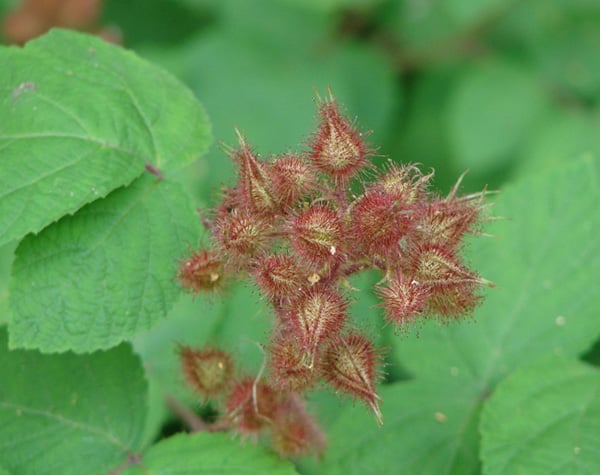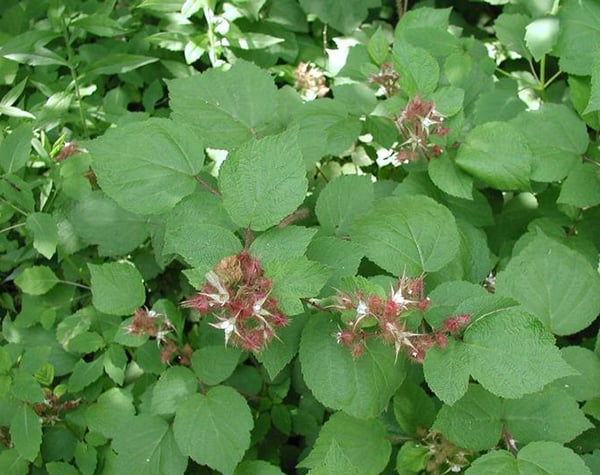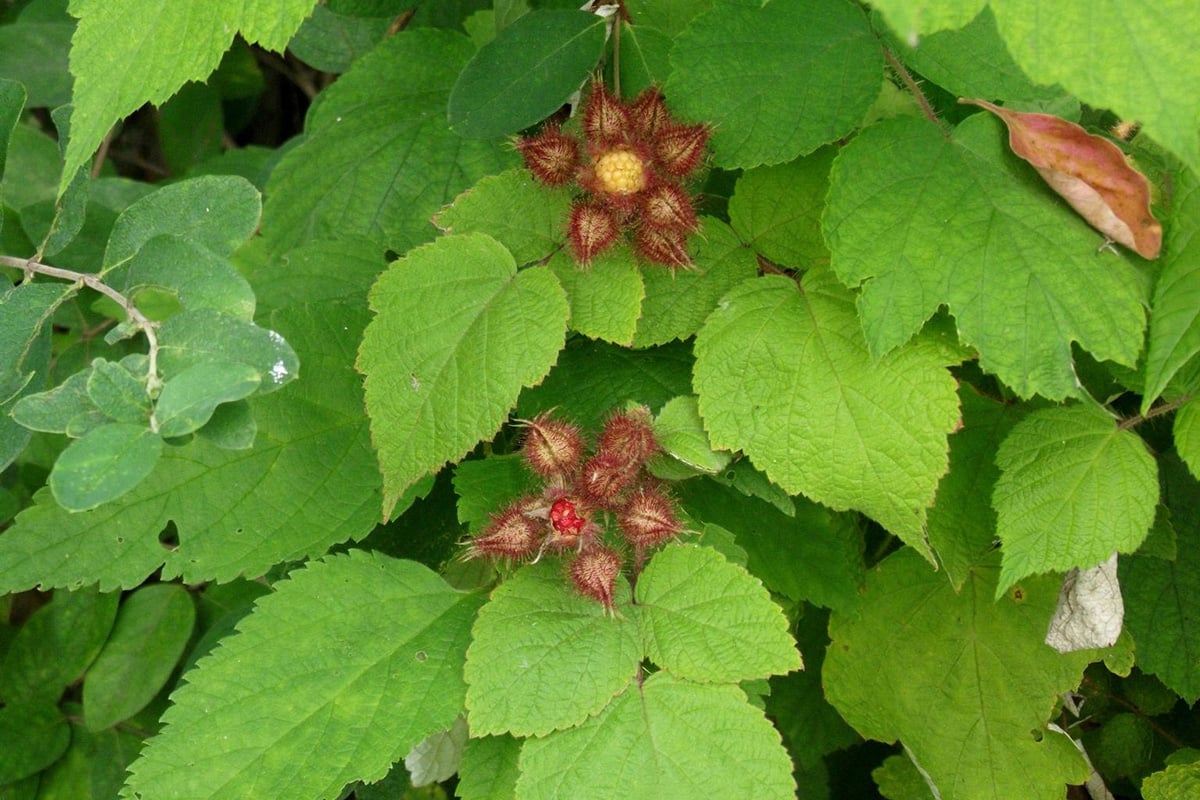Invasive Plants in Massachusetts
Wineberry
About Wineberry
Wineberry (Rubus phoenicolasius) is a deciduous shrub with upright arching stems and small flower buds, both of which are covered in reddish hairs. The leaves have whitish, hairy undersides. Native to Japan and China, it was imported as an ornamental plant and a fruit source.
The Problem
It forms dense thickets that shade and crowd out native plants. Although it prefers moist soil, it’s flexible and can thrive in many habitats.
The Solution
For small populations, hand pulling may be effective, but use thick gloves due to the sharp spines, and be sure to remove the entire root system. Another option is a foliar spray of a systemic herbicide. Where feasible, one effective control strategy is to mow the plant, then apply herbicide to the re-sprouting stems. Always read and follow the directions on the label when using herbicide.
Pictures of Wineberry



Stay Connected
Don't miss a beat on all the ways you can get outdoors, celebrate nature, and get involved.


